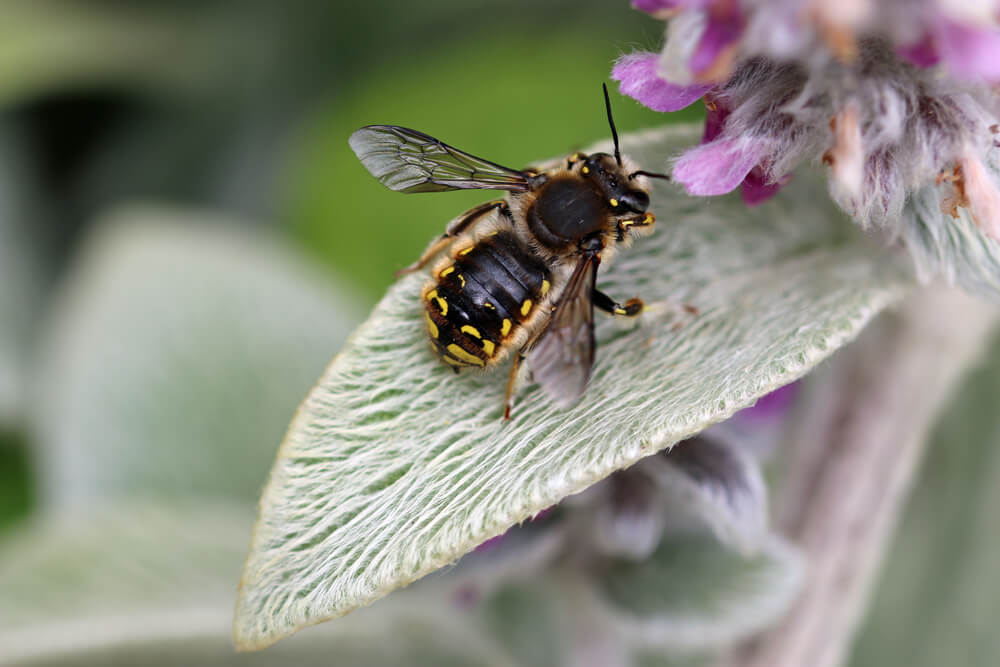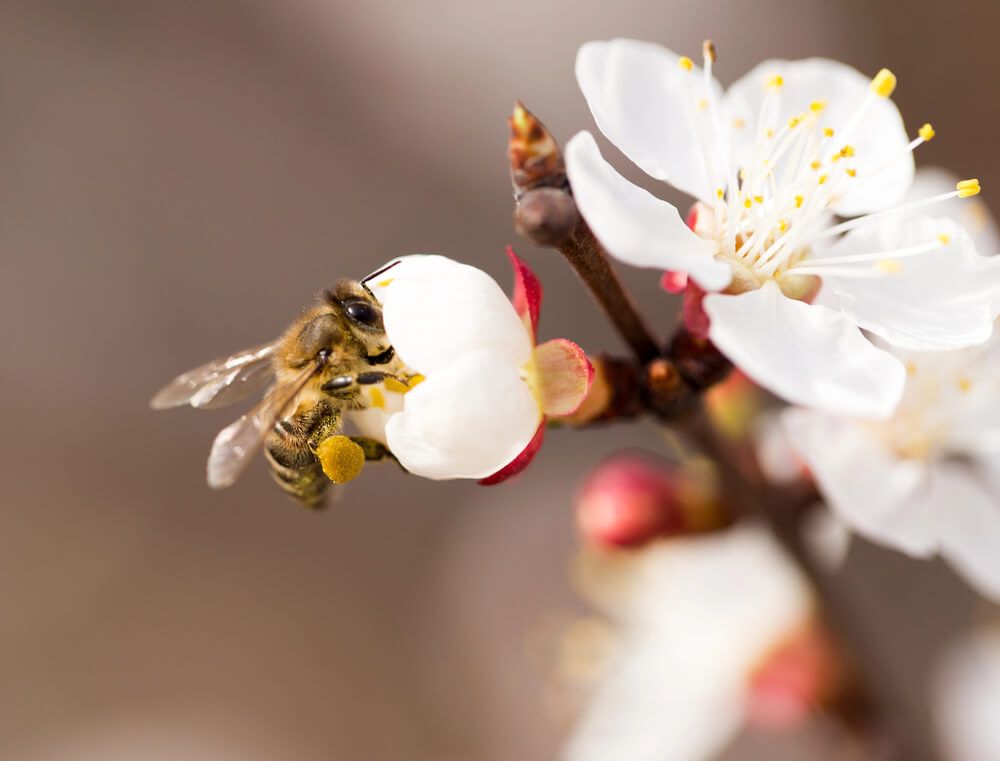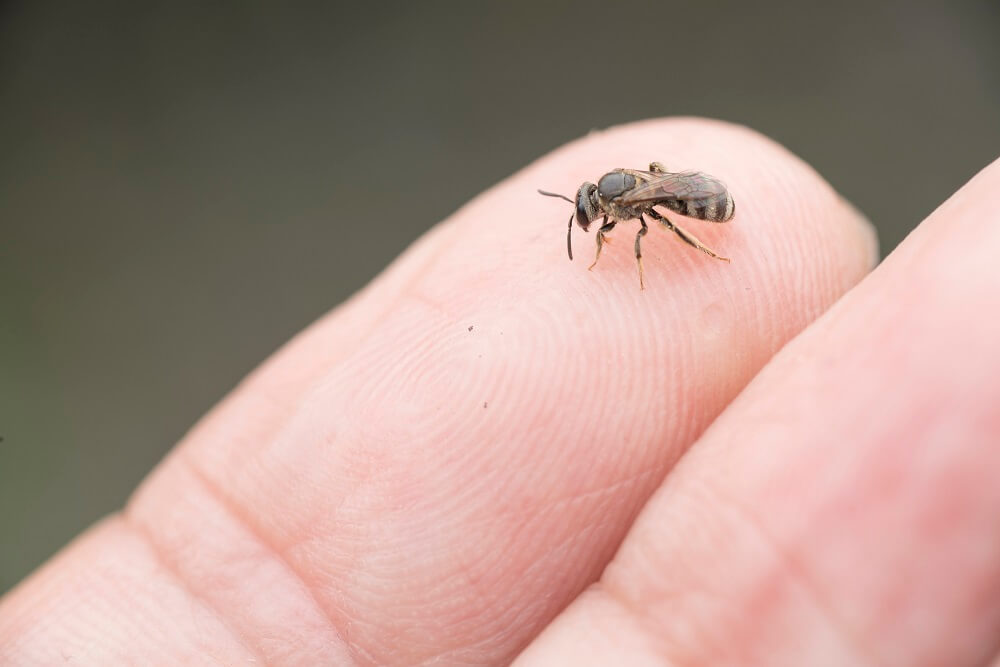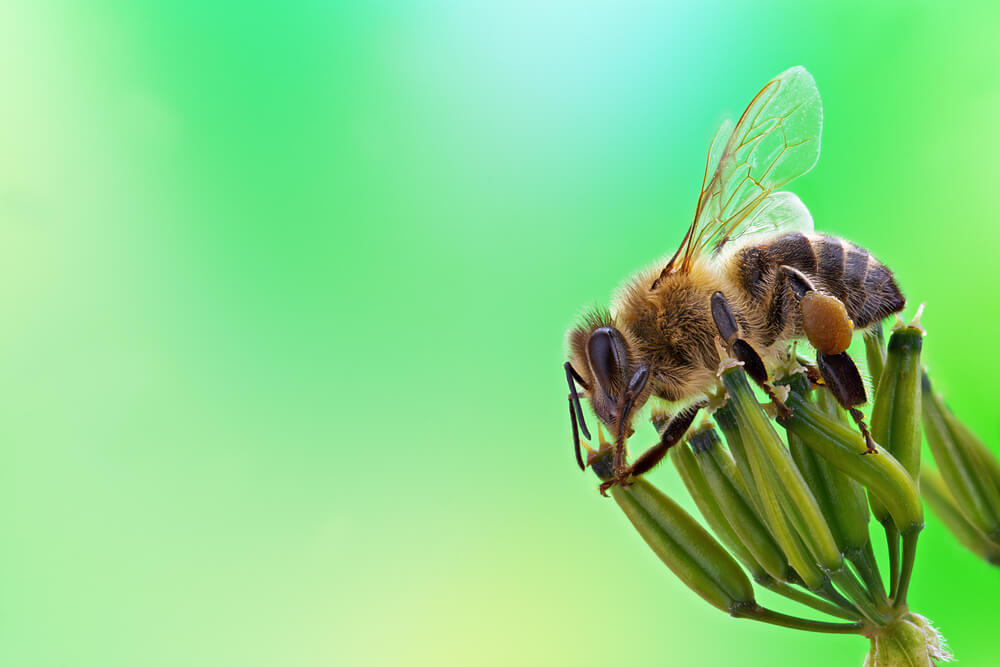Are Bees Insects?
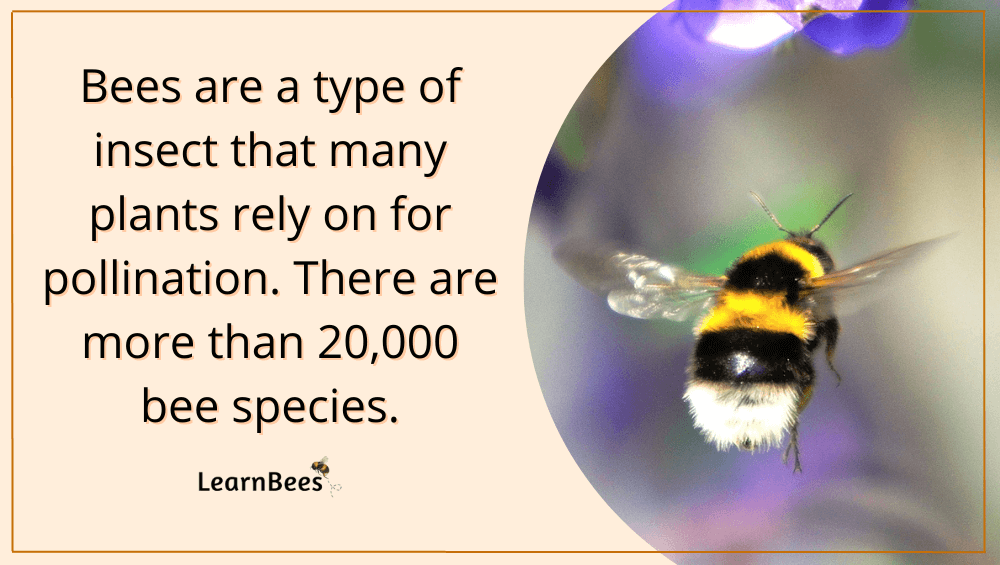
Bees are insects that are known for their vital role in pollination.
There are more than 20,000 bee species, including honeybees, bumblebees, carpenter bees, and mason bees. These busy bees work long hours pollinating flowers, which helps provide humans and animals with the food we need to survive.(1)
But that’s only the beginning.
Besides bees, there are over 1,000,000 different kinds of insects, including butterflies, ladybugs, fireflies, ants, and wasps.(2)
And you might be surprised to learn:
Bees are related to other familiar creatures, such as lobsters, crabs, shrimp, and crayfish.
All of these animals belong to a group called Arthropoda (which means “jointed foot”).
Even though bees and other arthropods, like crabs, don’t look alike, they still share these same characteristics:(3)
- A segmented body
- Paired segmented legs
- Bilateral symmetry (the left and right halves are identical)
- An external skeleton that sheds as the animal grows
Here’s the cool part:
Bees have roamed the Earth for at least 120 million years.
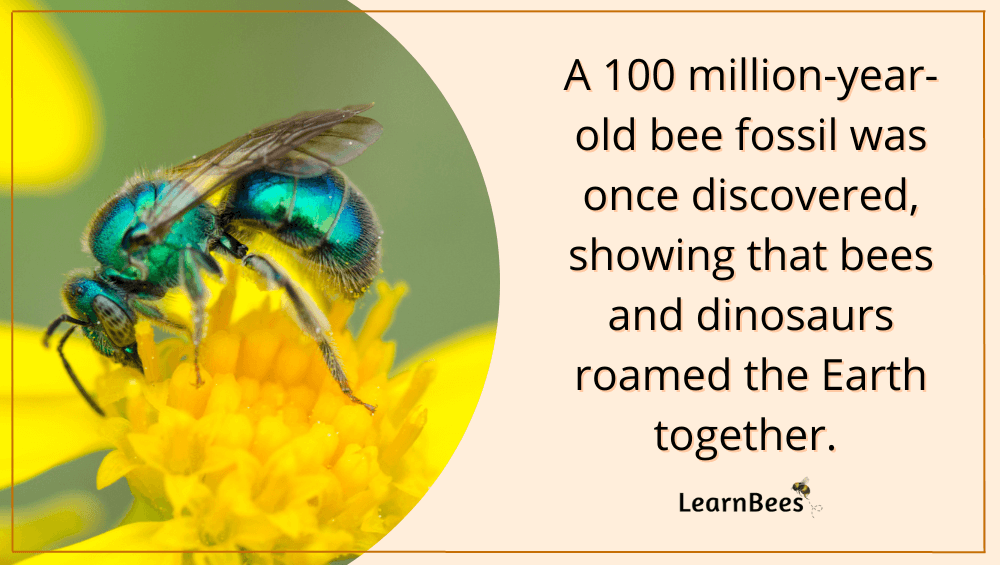
In fact, there was a bee fossil found dating back to 100 million years ago. This means that bees and dinosaurs roamed the Earth together for at least 40 million years, and possibly much longer.
Now that begs the question…
Why are insects so resilient?
Many of them survived the dinosaur extinction and the ice age. Not only that, but they’ve also thrived and produced thousands of new species.
Bees, in particular, owe much of their success to the following:
- Bees have wings. Wings allow them to relocate quickly. When food becomes scarce in one spot, they can fly to another with better options.
- Bees reproduce on a large scale. For instance, a queen honeybee can lay up to 2,000 eggs per day during warm seasons. This allows adaptations to occur at a faster rate, increasing survival.
- Bees evolve. For example, vulture bees are a type of bee that has grown to eat meat. Scientists believe this is because pollen (which is protein for bees) is scarce where these bees live. As such, they stopped relying on pollen and started eating meat.
Are Bees Animals?
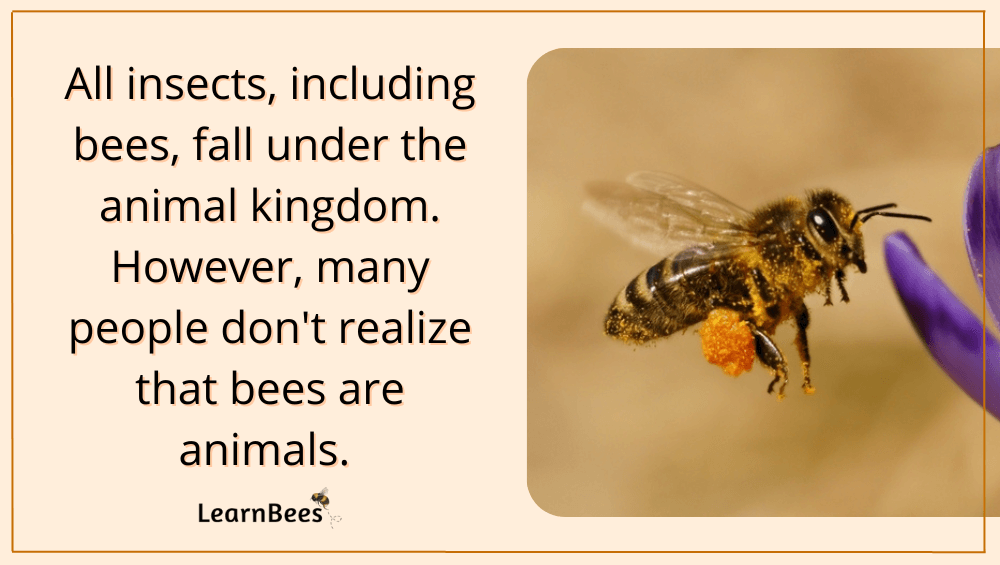
Bees, and all other insects, are considered animals.
Better yet?
Insects are the most diverse group of animals, with over a million different species. Insects represent more than 75% of all living organisms.(4, 5)
But this is where it gets tricky.
Many people don’t realize that bees and other insects are indeed animals.
Let me explain:
There are five kingdoms of living things: animals, plants, fungi, protista, and monera. Animals and plants are easily seen by the naked eye, while others, like bacteria, have to be seen under a microscope.(6)
Bees don’t fall under the plants, fungi, protista, or monera kingdoms. This leaves animals as the only category bees qualify for.
Additionally, bees and other animals share these characteristics:
- Animals eat. They don’t make their own food like plants do. Instead, they collect food to provide them with the nutrients and energy needed to survive.
- Animals are mobile. They fly, walk, swim, hop, slither, or crawl to get to where they need to be.
- Animals are made up of more than one cell.
So, in short, bees are insects that fall under the animal kingdom.
Are Bees Invertebrates?
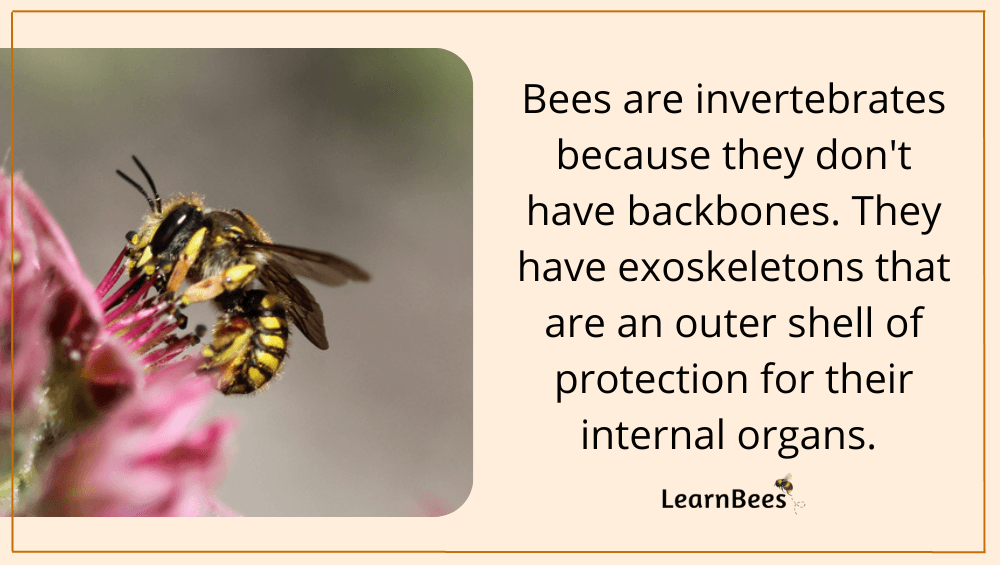
Animals are divided into two primary groups, those with backbones (vertebrates) and those without backbones (invertebrates).(7, 8)
Bees are invertebrates because they don’t have backbones.
Instead, bees have exoskeletons which means “outside skeleton.” Exoskeletons are hard and stiff, so they provide bees with protection. Exoskeletons also have bendable sections, like joints, that allow them to turn and move.(9)
Invertebrates can live on land, like bees, butterflies, and ladybugs. But they can also live in water, like lobsters, crabs, and shrimp.
In contrast:
Humans have vertebrae, which are bones that make up the spine and protect the spinal cord. Unlike bees, the human skeleton is on the inside. It’s covered by skin which is considered the largest organ in the human body.(10, 11)
So, in summary:
Bees are considered insects, anthropods, animals, and invertebrates.
FAQs on “Are Bees Insects?”
- Is a bee classified as an insect?
- What makes a bee an insect?
- Are bees insects or arthropods?
- What qualifies as an insect?
- Is a bee an insect or a fly?
- Are bees considered fish?
- Are bees reptiles?
Is a bee classified as an insect?
Yes, bees are classified as insects. Insects are a type of arthropod, which means they have jointed legs and a hard exoskeleton (external skeleton).
Insects are incredibly diverse, with over a million different species. Insects make up more than 75% of all living organisms. This means that over 75% of animal life forms on Earth are insects.
Insects thrive in all of Earth’s environments except for frozen ones such as Antarctica. Antarctica has a small number of insects, but they’re scarce.
Insects are the only invertebrates (animals without backbones) that have wings. In fact, most of their success results from their ability to fly and find new areas to live in. For example, if one location lacks the necessary food and water resources, flying insects like bees can relocate much more quickly.
Insect features:
- The insect body is split into three primary parts: the head, thorax, and abdomen.
- Insects have no internal skeleton. Instead, they have an external shell (exoskeleton) that protects their internal organs.
- Insects don’t have more than three pairs of legs, except for rare cases, such as caterpillars that have prolegs.
- The traditional insect mouth has a pair of lower jaws (maxillae) and upper jaws (mandibles), which are designed to bite or even drill holes into objects such as wood.
- Insects have a pair of antennae located on their head.
- Most insects have one or two sets of wings, although some insects, such as fleas and lice, are entirely wingless.
—> Go back to the FAQs on “Are Bees Insects?”
More to Explore:
- Ground Bees: Are They a Threat to Your Yard?
- Wasps vs. Honeybees: Are They Different?
- Do Bumble Bees Bite?
What makes a bee an insect?
Bees are insects that are distinguished by their mandibles and other anatomy. Bees have three primary body parts (head, thorax, and abdomen), six legs, compound eyes, and antennae.
Bees also have two pairs of wings that help them fly. Their wings are attached to their thorax, which is the middle section of their body.
Bees have a hard exoskeleton that protects them from predators and the environment. Exoskeletons are made up of chitin, which is a type of carbohydrate. Chitin is also found in the shells of crabs and lobsters.
Bees have a pair of maxillae, which are lower jaws, and mandibles, which are upper jaws. Their mandibles are specially adapted for chewing and cutting. For instance, female carpenter bees use their strong jaws (mandibles) to drill holes into wood.
Bees also have a stinger, a sharp object attached to the bee’s abdomen. The stinger is used for defense.
But it’s important to mention:
Just because bees have stingers doesn’t mean they’re aggressive-natured creatures.
In fact, the opposite is true. Bees will defend their nest if a predator gets too close. However, they don’t go out of their way to start trouble.
Plus, you don’t usually have to worry about bees when they’re pollinating flowers. This is because they’re away from their nests and have nothing to defend. Instead, they’re simply collecting nectar and pollen from the blossoms.
In most cases, the bees don’t even pay you any attention while they’re pollinating.
Speaking of pollinating, bees also have tongues that they use to collect nectar from flowers. The length of a bee’s tongue depends on the type of bee. For example, some bumblebees have long tongues to reach the nectar deep inside flowers.
Bees are important because they help pollinate plants. Pollination is when bees transfer pollen from the male parts of flowers (stamens) to the female parts (pistils). This process fertilizes the plant so that it can produce fruits and vegetables.
Bees are critical to our food supply because they pollinate approximately one-third of our crops. These include fruits, nuts, and vegetables. Without bees, we wouldn’t have many foods we eat daily.
—> Go back to the FAQs on “Are Bees Insects?”
More to Explore:
Are bees insects or arthropods?
Bees are both insects and arthropods. Arthropods are a type of animal that has an exoskeleton, jointed legs, and segmented bodies. Insects are arthropods with six legs, three body parts, compound eyes, and antennae. They make up over 70% of all animals on Earth.
Arthropods help play a major role in maintaining ecosystems.
For example, they can help through pollination, recycling nutrients, and scavenging food. They make up many of the animals we come across in our gardens, such as bees, butterflies, and spiders.
Arthropods are divided into four main categories:
- insects
- myriapods (including centipedes and millipedes)
- arachnids (including scorpions, spiders, and mites)
- crustaceans (including crabs, shrimp, and lobsters)
Although arthropods are found everywhere, we don’t understand completely how all the groups are related.
Scientists have come up with many conflicting theories about how arthropods evolved and diversified. Arthropods are a very successful group of animals and will continue to be an important part of our ecosystems.
—> Go back to the FAQs on “Are Bees Insects?”
More to Explore:
- Do Carpenter Bees Pollinate?
- How Long Do Bumble Bees Live?
- Honeybees vs. Bumblebees: How Do They Compare?
What qualifies as an insect?
Bees, butterflies, ants, beetles, and wasps are all examples of insects. However, spiders, centipedes, and millipedes are not.
So, what makes an insect?
Insect adults have three body sections (a head, a thorax, and an abdomen) and six legs. Many adult insects also have wings.
That said, some insects look very different when they’re young. For instance, caterpillars undergo metamorphoses into butterfly adults. After becoming a butterfly, they have all the characteristics mentioned above.
In contrast, spiders are arachnids, not insects. Arachnids have two body sections (a cephalothorax and an abdomen) and eight legs. Arachnids don’t have wings or antennae.
There are more than 45,000 species of spiders.
—> Go back to the FAQs on “Are Bees Insects?”
More to Explore:
- Do Queen Bees Eat Honey?
- Are Worker Bees Male or Female?
- Queen Bee Versus Worker Bees – How Do They Compare?
Is a bee an insect or a fly?
Bees are winged insects, not flies. Some flies may look like bees. However, they aren’t the same.
True flies are a big group of insects with only two wings. On the other hand, bees have four wings – two big and two small.
Both bees and flies have compound eyes that are great at detecting motion, which is why it’s so hard to catch them. Flies have massive eyes that meet at the top of the head if they’re male, and eyes that almost meet if they’re female.
Bees have long antennae. Most flies have short antennae with a long bristle (called an arista) at the tip. Bees also have a chewing mouth, while flies have a spongy “pad” at the end of their long and flexible “arm.”
What’s more, bees typically don’t hover in the air for very long, like flies do. Many flies seem to be able to hover indefinitely.
—> Go back to the FAQs on “Are Bees Insects?”
More to Explore:
Are bees considered fish?
No, bees aren’t considered fish.
However, some confusion arose when California grouped bees under the “fish” category to protect them. The California Endangered Species Act (CESA) is a law that protects plant and animal species in California that are at risk of extinction.
—> Go back to the FAQs on “Are Bees Insects?”
More to Explore:
Are bees reptiles? Are bees mammals or reptiles?
Bees don’t technically fall under the reptiles or mammal category.
Thus, this makes this a complicated question. So here’s a simplified answer:
Insects are anthropods — meaning, they have six legs, no spine, are cold-blooded, and they lay eggs. Mammals have four legs (unless they’ve evolved to lose them — such as dolphins), are warm-blooded, have spines, and give birth to live babies.
Reptiles typically have four limbs (although snakes have evolved to lose their limbs) and spinal columns, like mammals — but they’re cold-blooded and lay eggs like anthropods.
Birds have four limbs (like reptiles and mammals) and lay eggs (like reptiles) but are warm-blooded (like mammals).
All sets of species share similarities. But each group of species also has unique traits that make them special and help them survive.
Insects’ closest relative is likely lizards — which are cold-blooded creatures that lay eggs like insects do. And because fish evolved from lizards, insects also share similarities with fish as well.
